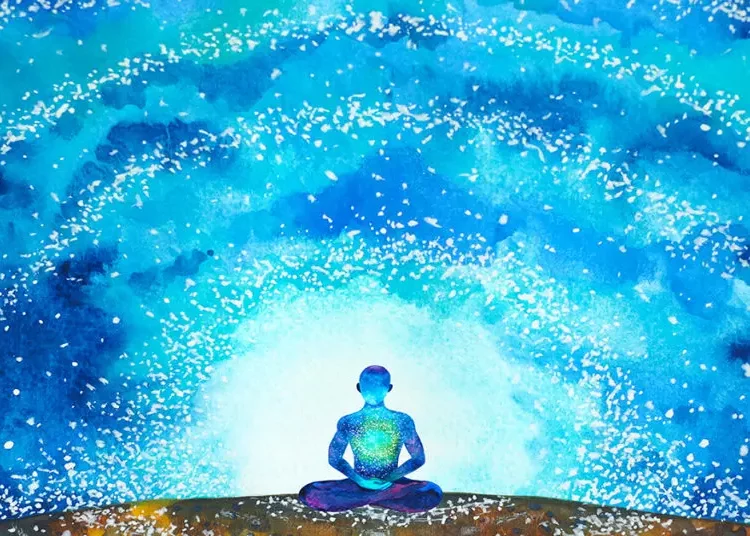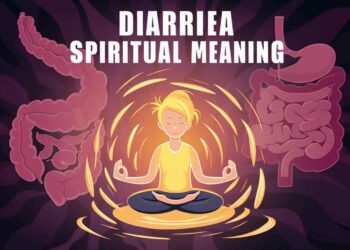Understanding Aura: Definition and Interpretation
An aura is an energy field that surrounds every living creature, including humans. It is believed to be a reflection of the individual’s physical, emotional, mental, and spiritual state. Auras can be seen or sensed by some people who have developed their psychic abilities. The colors and patterns in an aura can provide insight into the person’s personality traits, emotions, and overall well-being.
The interpretation of an aura depends on its color and intensity. Each color has its own meaning and significance. For example, a blue aura is associated with communication, intuition, and spiritual awareness. Understanding the different colors of an aura can help individuals gain insight into themselves and others.
Exploring the Different Colors of Aura
Auras are made up of different colors that represent different aspects of a person’s being. Here are some common colors found in auras:
Red
- Represents passion, strength, and vitality
- May indicate anger or stress if it appears dark or muddy
- A bright red aura may indicate confidence or excitement
Orange
- Represents creativity, joy, and enthusiasm
- A bright orange aura may indicate good health and vitality
- An orange aura may also indicate a need for social interaction or connection with others
Yellow
- Represents intellect, optimism, and happiness
- A bright yellow aura may indicate intelligence or creativity
- A pale yellow aura may indicate a lack of confidence or self-esteem
Green
- Represents growth, balance, and harmony
- A bright green aura may indicate healing or new beginnings
- A dark green aura may indicate jealousy or possessiveness
Blue
- Represents communication, intuition, and spiritual awareness
- A bright blue aura may indicate clarity of thought and deep insight
- A dark blue aura may indicate depression or sadness
The Spiritual Significance of a Blue Aura
In spiritual traditions, the color blue is often associated with the throat chakra, which governs communication and self-expression. A blue aura can indicate that an individual is in touch with their inner voice and has the ability to communicate their thoughts and feelings effectively.
Blue is also associated with intuition and spiritual awareness. A person with a strong blue aura may have heightened psychic abilities or be more in tune with their own spirituality. They may have a deep sense of purpose or meaning in life.
Personality Traits and Emotions Associated with a Blue Aura
Individuals with a blue aura are often described as calm, peaceful, and serene. They tend to be introspective and reflective, taking time to think deeply about their thoughts and emotions before expressing them.
People with a blue aura are often good listeners who value communication and connection with others. They have a natural ability to empathize with others and understand their perspectives.
Can Auras Change Over Time?
Yes, auras can change over time. A person’s aura is influenced by their thoughts, emotions, and experiences. If an individual undergoes significant personal growth or experiences a traumatic event, their aura may change as a result.
Additionally, practicing meditation or other spiritual practices can help individuals shift the energy in their aura and bring about positive changes in their life.
Scientific Studies on the Existence of Auras
While there is no scientific evidence to support the existence of auras, some researchers have attempted to study them using various methods. One such method is Kirlian photography, which captures images of an object’s electromagnetic field.
However, these studies have been criticized for their lack of scientific rigor and reproducibility. As such, the existence of auras remains a topic of debate among scientists and skeptics.
How to See or Sense Someone’s Aura?
Some people are born with the ability to see or sense auras, while others may develop this ability through practice and training. Here are some techniques that can help individuals see or sense someone’s aura:
- Meditation: Practicing meditation can help individuals quiet their minds and become more aware of subtle energies around them.
- Awareness: Paying attention to one’s surroundings and being mindful of subtle changes in energy can help individuals tune into someone’s aura.
- Practice: Regularly practicing techniques such as visualization or energy work can help individuals develop their psychic abilities over time.
Changing Your Own Aura Color through Meditation and Practices
Meditation and other spiritual practices can help individuals shift the energy in their aura and bring about positive changes in their life. Here are some techniques that can help individuals change the color of their aura:
- Visualization: Visualizing a specific color or energy can help individuals bring that energy into their aura.
- Affirmations: Repeating positive affirmations can help individuals shift their thoughts and emotions, which in turn can affect the energy in their aura.
- Energy work: Practices such as Reiki or Qi Gong can help individuals balance and harmonize the energy in their aura.
Famous People with a Blue Aura
While it is not possible to confirm the aura colors of famous people, some spiritual practitioners have speculated on the auras of certain celebrities. Some famous people who are believed to have had a blue aura include:
- Mother Teresa
- Mahatma Gandhi
- Nelson Mandela
The Relationship Between Chakras and Auras
Chakras are energy centers located throughout the body that govern various aspects of an individual’s being. Each chakra is associated with a specific color, which corresponds to a particular aspect of the person’s physical, emotional, or spiritual state.
The colors in an individual’s aura may be influenced by the state of their chakras. For example, if an individual’s throat chakra (associated with blue) is blocked or unbalanced, this may manifest as a dark or muddy blue color in their aura.
The Significance of Primary Color in an Individual’s Aura
The primary color in an individual’s aura is the color that appears most prominently. This color can provide insight into the person’s overall state of being and personality traits.
For example, if an individual’s aura is primarily blue, this may indicate that they are highly intuitive and in touch with their spiritual side. If their aura is primarily red, this may indicate that they are passionate and driven.
Multiple Colors Present in an Individual’s Aura at Once?
It is common for multiple colors to be present in an individual’s aura at once. These colors may blend together or appear as distinct bands of color.
The combination of colors in an individual’s aura can provide more nuanced insight into their personality traits and emotional state than a single color alone.
Interpreting Conflicting Colors in Someone’s Aura
If conflicting colors are present in someone’s aura, it may indicate that the person is experiencing internal conflict or uncertainty. For example, if someone has both a red and blue aura, this may indicate that they are torn between their passions and their intuition.
In these cases, it can be helpful to explore the underlying emotions and beliefs that are causing the conflicting energies in the aura.
Negative Connotations Associated with a Blue Aura?
There are no inherently negative connotations associated with a blue aura. However, if a blue aura appears dark or muddy, this may indicate that the person is experiencing depression or sadness.
In these cases, it is important to address the underlying emotional issues causing these feelings and seek support from loved ones or mental health professionals as needed.
Gemstones and Crystals to Enhance or Balance Your Blue Aura Energy
Gemstones and crystals are believed to have unique energetic properties that can help enhance or balance an individual’s aura. Here are some gemstones and crystals that may be beneficial for individuals with a blue aura:
- Lapis Lazuli: This deep blue stone is associated with intuition and spiritual awareness.
- Aquamarine: This light blue stone is associated with communication and self-expression.
- Blue Lace Agate: This pale blue stone is associated with calmness and serenity.
In conclusion, the blue aura is often associated with calmness, communication, and self-expression. It is believed to indicate a strong connection with intuition and spirituality. However, it’s important to note that aura colors can vary depending on an individual’s state of mind and emotions.






